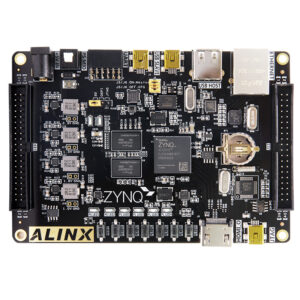When we want to control 2 different circuits, devices, voltages, we can go for a SPDT Slide Switch which is rated at a maximum of 30V/200mA.
It is a Single-Pole, Double-Throw (SPDT) slide switch as shown in figure 1. This is similar to SPDT Toggle Switch except that it can handle less power.

Now let’s understand what SPDT means?
SPDT (Single-Pole, Double-Throw) are switches that are used if we want to supply some instrument with two different voltages (such as a fan) or if we want a certain voltage to be directed at one item (maybe a fan) at one time, then once the switch is flipped the voltage is directed at another item. This type of switch allows one to switch between two different types of closed circuits and an open circuit as shown in figure 2.

Physical features of a SPDT Slide Switch
A SPDT Slide Switch switch has 3 terminals. Terminal 1 can connect up to any load to power a certain device. And terminal 3 can connect to any load to power any device. Terminal 2 is the terminal which receives the power necessary so that the loads on terminals 1 and 3 can be powered.
So a SPDT Slide Switch can power either one of 2 circuits. It can flip between the 2 circuits so that just by the flip of the switch, different circuits, or devices, can be powered. It can be used alone and for On/Off power switches for low power electronics and it can be used to switch between two analog or digital input signals.
It is rated at 30V/200mA. The pins have 0.1″ spacing between each other and it fits into a breadboard easily.
An example circuit of a SPDT Mini Slide Switch is shown below:

In this circuit, we connect a 9-volt DC power source to terminal 2. Terminal 2 represents the Slide switch which we can flip between terminals 1 and 3. Terminal 1 is connected to a fan. When we flip the switch to the left (terminal 1), the DC fan runs while the DC motor does not. When we flip the switch to the right (terminal 3), the DC motor runs while the fan does not. We can see that in this way, with a SPDT Slide switch, we can control 2 different circuits or devices. A double throw switch allows 2 different options.
A further enhancement to example given above can be seen in the simulation output from Proteus tool as shown below. We can clearly see that initially only the lamp is illuminating while the DC motor is turned OFF. But in figure 5, it is just the opposite and the DC motor works while the lamp is switched OFF. Thus with the SPDT switch, we can switch between the applications.


Thank you for reading this blog,
For more information about the product please visit: http://www.tenettech.com/product/4114
For technical queries please drop an e-mail: info@tenettech.com






